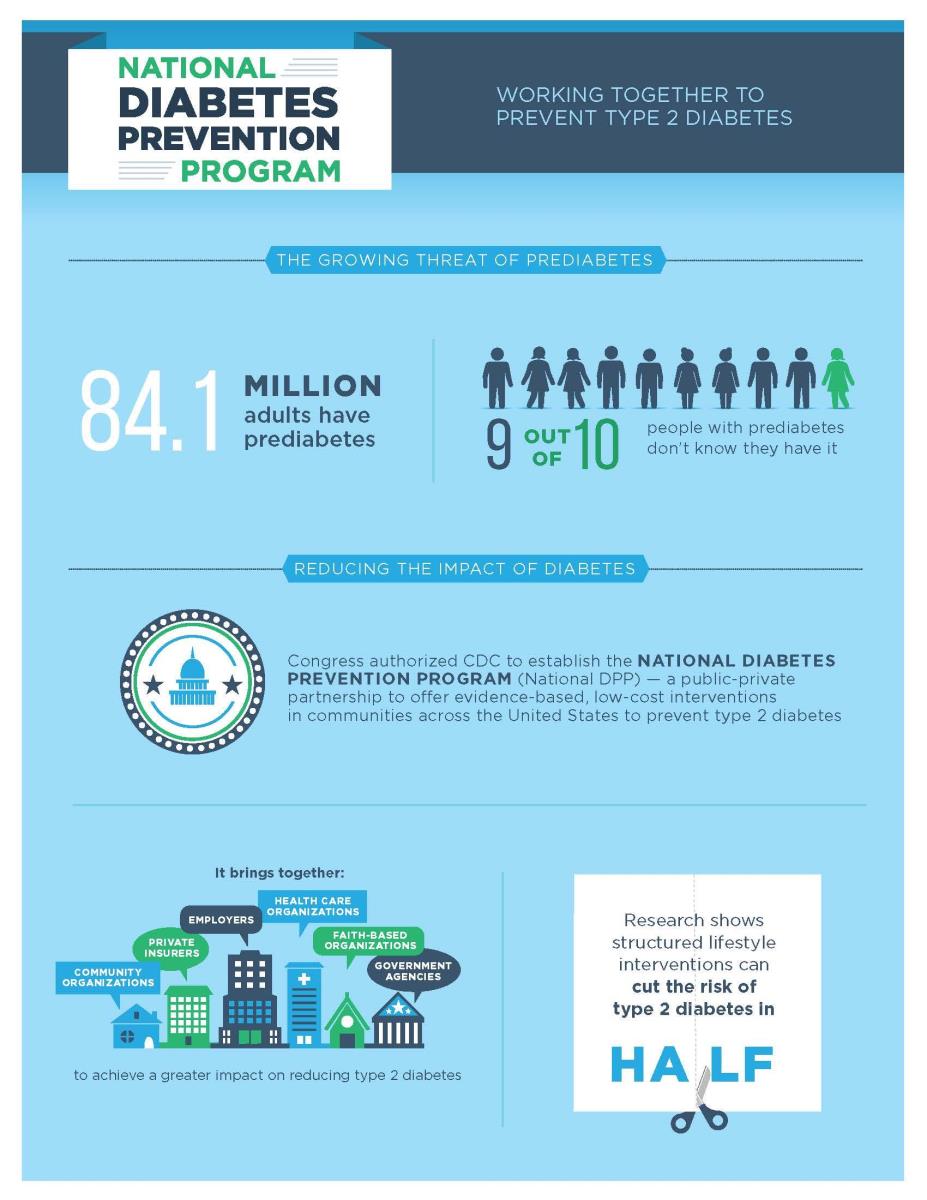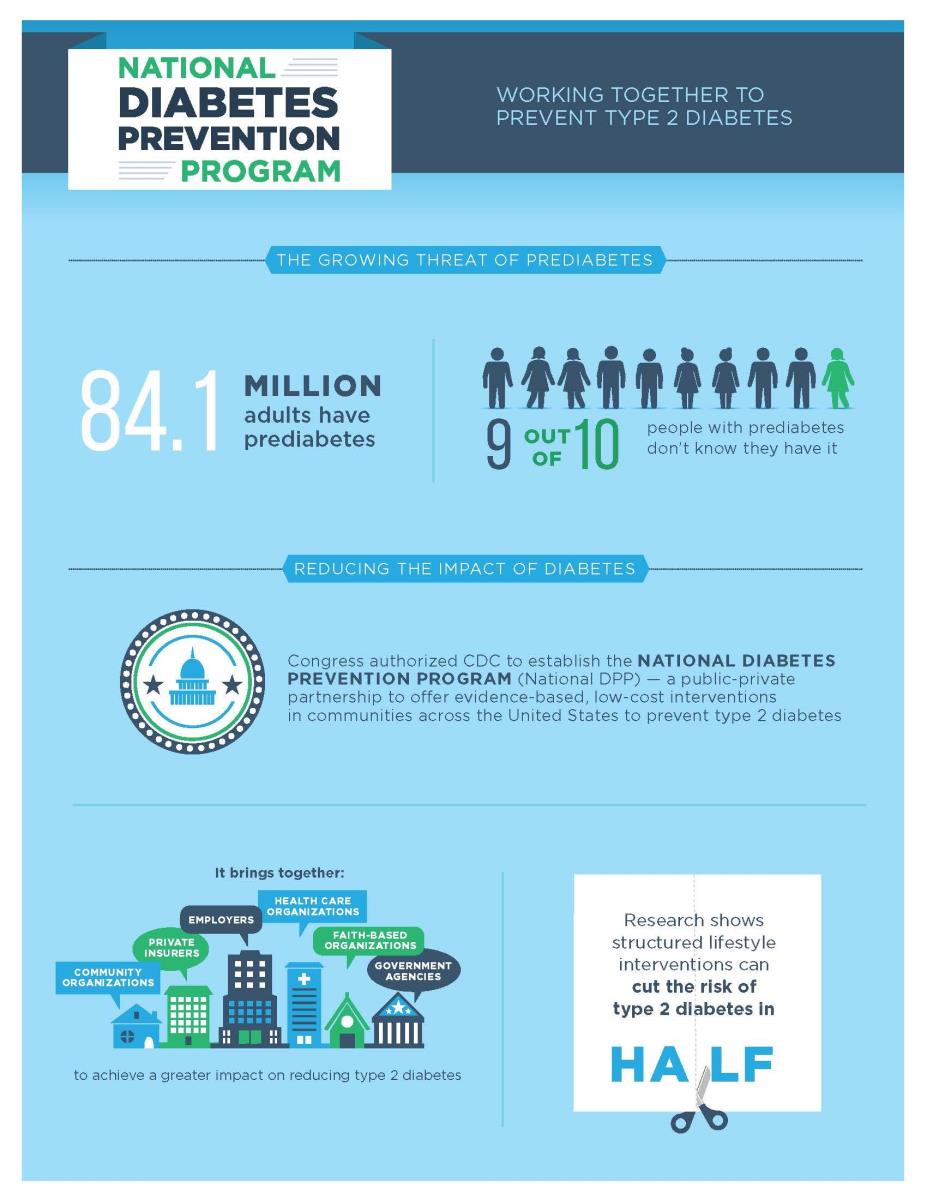Diabetes Prevention
It may sound simple — walk 30 minutes a day, five days a week; keep a food journal. In the Centers for Disease Control and Prevention’s National Diabetes Prevention Program, these small goals help participants lose five to seven percent of their body weight, reducing their chance of developing pre-diabetes.
Bridget Morrisroe-Aman, University of Idaho Extension educator, says that when people start the Diabetes Prevention Program (DPP), they usually don’t realize what being pre-diabetic means. They don’t know the risks or the treatments when diagnosed, and that’s why it’s important to teach simple and accurate information.
“It’s possible to reduce the risk of developing type 2 diabetes,” said Morrisroe-Aman. “You just have to know what steps to take.”
Many people are confused regarding what it means to be diagnosed with pre-diabetes versus diabetes. When diagnosed with pre-diabetes, blood sugar levels are higher than normal, stressing the body, and they are lower than type 2 diabetes levels.
“Once someone transitions into type 2 diabetes, the disease is hard to reverse,” Morrisroe-Aman said. “It’s important to start disease management during or before the pre-diabetic stage.”
Too frequently, patients don’t understand the distinction between the two stages, nor what can be done to prevent moving into the high-risk blood sugar levels. One DPP participant had been told by doctors she was pre-diabetic but didn’t understand the diagnosis. The participant said she wished she had understood then about carbohydrates and how they relate to diabetes, so she could have taken action before her disease developed further.
“Now she’s hearing the information again at a basic level in the program,” said Morrisroe-Aman. “She’s learning tools, incorporating healthy meal plans; she can manage her disease now.”
Diabetes Prevention Program
The DPP was developed in response to the growing number of adults and children with type 2 diabetes to increase awareness and prevent spread of the disease. UI Extension, the Idaho Department of Health and Welfare, Idaho health professionals and screeners, and other community partners, work in conjunction to tackle this problem before it becomes a health epidemic.
During the 2017-2018 program year, UI Extension partnered with the Idaho Department of Health and Welfare to host a master diabetes prevention trainer who certified seven UI Extension educators and one program coordinator to teach DPP. With participant numbers in each class ranging from five to 20, UI Extension taught six yearlong classes – two in Ada County, two in Canyon County, and one each in Jerome and Minidoka County.
“Extension is well positioned to assist Idaho agencies with this because we reach into the community and get information to people,” Morrisroe-Aman said.
One of the best tools for stopping the spread diabetes is something people can do for themselves — eat nutritiously and increase physical activity. That’s where the DPP comes in. The program model focuses on prevention before participants have diabetes. It allows individuals to take control of their health, and if they can prevent chronic disease, extends their lifespan so they lead longer and healthier lives.
“The more education, the better,” said Morrisroe-Aman. “Healthy eating and active living is the best way to prevent chronic diseases. These are simple concepts that help people.”
One young participant joined the program after being diagnosed with pre-diabetes. By applying principles learned through the DPP, the participant lost more than seven percent of her body weight, and according to her doctor, is not pre-diabetic anymore.
“What works for the individual is if they are ready for change. We’re hopeful that participating in the program will help them get motivated,” said Morrisroe-Aman. “That’s why the program is yearlong, to get those habits into place. It makes a difference.”
Type 2 Diabetes on the Rise
Costs associated with diabetes treatment has a growing impact on our economy. In 2017, there was an estimated $327 billion spent on diabetes and pre-diabetes with 2020 projections of $3.35 trillion if the trend continues.
Current research shows that type 2 diabetes is increasing exponentially — virtually no American is immune to the effects of this chronic disease. The CDC reports in a 2015 study that 100 million Americans have pre-diabetes or diabetes, and numbers are growing.
“It touches all of us, family, friends; you can look around,” Morrisroe-Aman said. “It’s estimated that one of five adults are pre-diabetic and many don’t know it. That’s why I’m passionate about it; we can prevent type 2 diabetes with healthy lifestyles.”
Though it’s hard to reverse the disease, it can be managed.
“I recommend everybody take a risk-assessment test,” said Morrisroe-Aman. “It’s better to address a chronic disease before it develops too far, and for a lot of people, family medical history comes into play.”
Curious about your risk of developing pre-diabetes? Take a risk assessment (PDF).
Want to bring Diabetes Prevention Program to your county? Contact Bridget Morrisroe-Aman at bridgeta@uidaho.edu or 208-287-5900.

Article by Aubrey Stribling, University of Idaho Extension
Published in December 2018.







